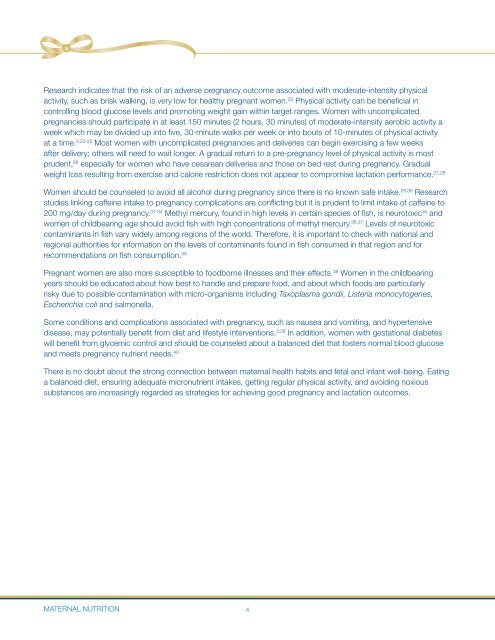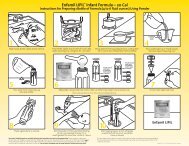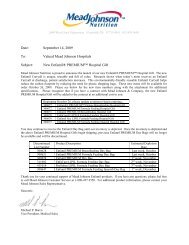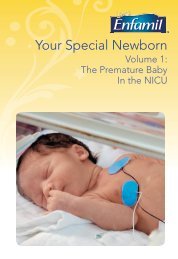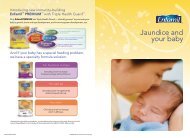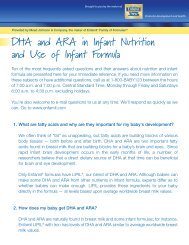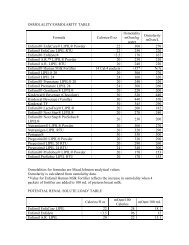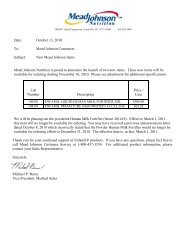LB2882MaternalNutriti+ - Mead Johnson Nutrition
LB2882MaternalNutriti+ - Mead Johnson Nutrition
LB2882MaternalNutriti+ - Mead Johnson Nutrition
Create successful ePaper yourself
Turn your PDF publications into a flip-book with our unique Google optimized e-Paper software.
Research indicates that the risk of an adverse pregnancy outcome associated with moderate-intensity physical<br />
activity, such as brisk walking, is very low for healthy pregnant women. 23 Physical activity can be benefi cial in<br />
controlling blood glucose levels and promoting weight gain within target ranges. Women with uncomplicated<br />
pregnancies should participate in at least 150 minutes (2 hours, 30 minutes) of moderate-intensity aerobic activity a<br />
week which may be divided up into fi ve, 30-minute walks per week or into bouts of 10-minutes of physical activity<br />
at a time. 3,23-25 Most women with uncomplicated pregnancies and deliveries can begin exercising a few weeks<br />
after delivery; others will need to wait longer. A gradual return to a pre-pregnancy level of physical activity is most<br />
prudent, 26 especially for women who have cesarean deliveries and those on bed rest during pregnancy. Gradual<br />
weight loss resulting from exercise and calorie restriction does not appear to compromise lactation performance. 27,28<br />
Women should be counseled to avoid all alcohol during pregnancy since there is no known safe intake. 29,30 Research<br />
studies linking caffeine intake to pregnancy complications are confl icting but it is prudent to limit intake of caffeine to<br />
200 mg/day during pregnancy. 31-34 Methyl mercury, found in high levels in certain species of fi sh, is neurotoxic 35 and<br />
women of childbearing age should avoid fi sh with high concentrations of methyl mercury. 36,37 Levels of neurotoxic<br />
contaminants in fi sh vary widely among regions of the world. Therefore, it is important to check with national and<br />
regional authorities for information on the levels of contaminants found in fi sh consumed in that region and for<br />
recommendations on fi sh consumption. 35<br />
Pregnant women are also more susceptible to foodborne illnesses and their effects. 38 Women in the childbearing<br />
years should be educated about how best to handle and prepare food, and about which foods are particularly<br />
risky due to possible contamination with micro-organisms including Taxoplasma gondii, Listeria monocytogenes,<br />
Escherichia coli and salmonella.<br />
Some conditions and complications associated with pregnancy, such as nausea and vomiting, and hypertensive<br />
disease, may potentially benefi t from diet and lifestyle interventions. 3,39 In addition, women with gestational diabetes<br />
will benefi t from glycemic control and should be counseled about a balanced diet that fosters normal blood glucose<br />
and meets pregnancy nutrient needs. 40<br />
There is no doubt about the strong connection between maternal health habits and fetal and infant well-being. Eating<br />
a balanced diet, ensuring adequate micronutrient intakes, getting regular physical activity, and avoiding noxious<br />
substances are increasingly regarded as strategies for achieving good pregnancy and lactation outcomes.<br />
MATERNAL NUTRITION 4


